Embark on an enchanting journey into the heart of Vietnamese traditional clothing. Feel the allure of Ao Ba Ba, witness the grace of Ao Dai – each piece, a captivating tale. Discover the distinctive features, unravel the history, and grasp the profound role these garments play in daily life and special occasions. Come, join us on a fascinating voyage to explore the timeless elegance of Vietnam’s cultural attire.
Icons of Vietnamese Traditional Clothing
Vietnamese traditional clothing stands as a testament to the rich cultural tapestry of the nation, with garments like the Ao Ba Ba, Ao Dai, and Conical Hat serving as iconic symbols. In this exploration, we delve into the distinctive features and history of the Ao Ba Ba, a garment that carries centuries of tradition and style.
Ao Ba Ba
The story of the Ao Ba Ba begins in the first half of the 19th century, innovated by Truong Vinh Ky, who drew inspiration from the shirts of Penang islanders, adapting it to suit the Vietnamese style.
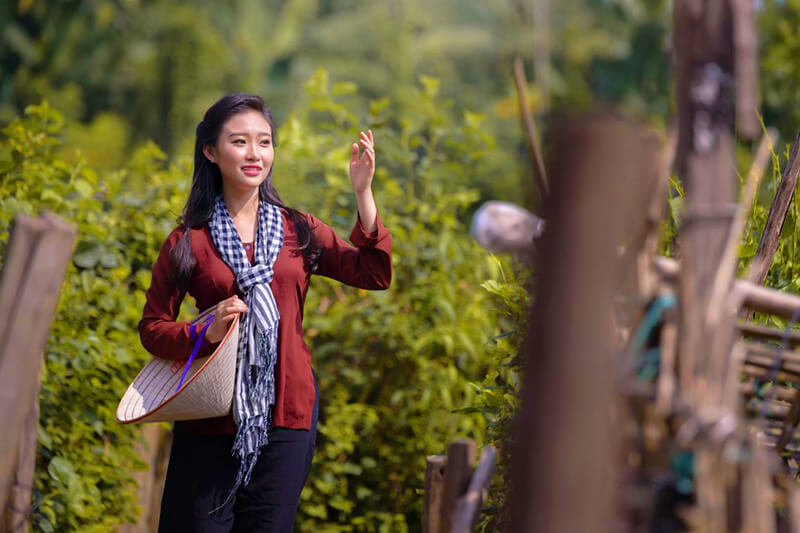
Traditionally worn by farmers in the Mekong Delta, the Ba Ba shirt is characterized by its collarless design. The back body is crafted from a single piece of fabric, while the front consists of two pieces with two strips of buttons running down the middle. With a tight waist, moderate slits on both sides, and a length covering the buttocks, this shirt accentuates the curves of the woman’s body.
Ba Ba shirt buttons have evolved over time, with traditional button styles giving way to diverse and creatively designed buttons. In the past, natural elements like almond leaves, gourd bark, and mulberry tree bark were used to dye the shirt black or brown, and mud was applied to prevent color fading. With the advent of imported fabrics, black fabric, linoleum, and black denim have become popular for their convenience and durability in various working conditions.
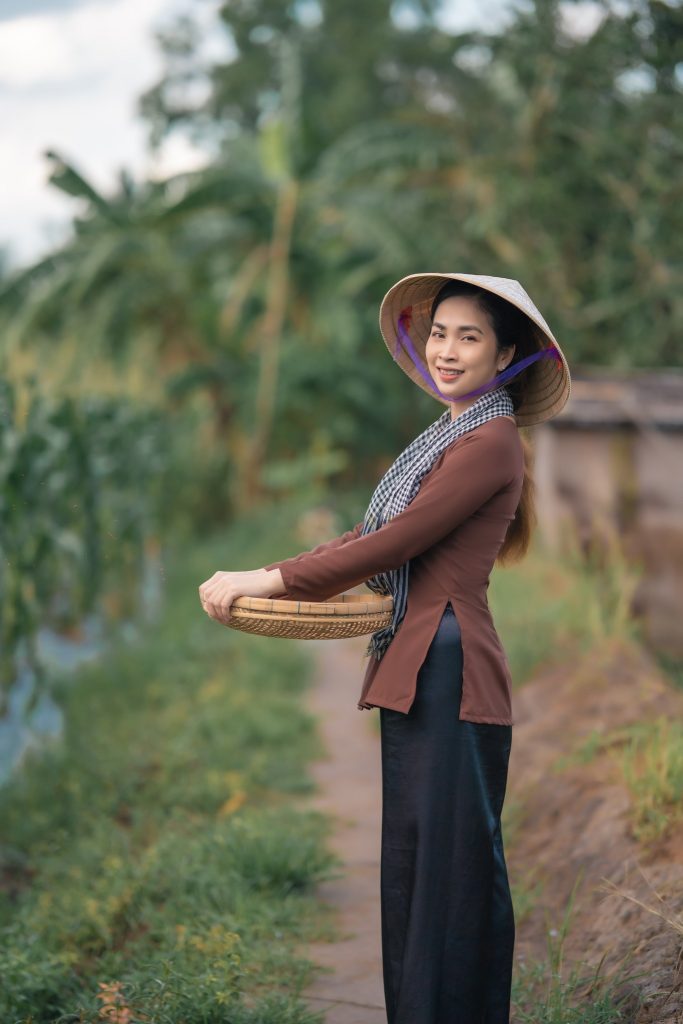
Over the years, the Ba Ba shirt has undergone numerous innovations. Modern iterations feature a more tailored fit, emphasizing the waist and bust. Styles vary, incorporating lotus leaf collars, swallow wings, corrugated iron, and other elements inspired by foreign fashion. Hand assembly techniques have seen significant improvements, with the 1970s introducing the hand-assembled raglan style. This modern adaptation features separate sleeves assembled at the shoulders, creating a sleeker and more comfortable fit.
Today’s Ba Ba shirt is a fusion of tradition and modernity. It retains the essence of the original garment while adapting to contemporary fashion trends. Although opinions on its origin may vary, the Ba Ba shirt, when combined with a black turtleneck outfit, bandana, and conical hat, becomes a unique symbol of the spiritual and cultural beauty of Southern Vietnamese women.
What to wear in Vietnam greatly depends on the diverse climate experienced across regions and seasons.
Ao Dai: A Timeless Symbol in Vietnamese Fashion
When discussing traditional Vietnamese costumes, the mind often turns to the exquisite Ao Dai. Across the epochs and the pages of historical development, the Vietnamese Ao Dai remains a steadfast presence, a cultural emblem woven into the fabric of Vietnamese identity for over 1,000 years.

Found on artifacts such as Ngoc Lu, Hoa Binh, Hoang Ha bronze drums, and Dao Thinh bronze jars, the Ao Dai has stood witness to the heroic chronicles of the nation. Through the undulating tides of Vietnam’s history, the Ao Dai has endured, bearing the indelible mark of a civilization that spans millennia.
The Vietnamese Ao Dai transcends its seemingly simple appearance; it symbolizes purity and carries profound meanings. Treasured across generations, it stands testament to Vietnam’s enduring heritage, reflecting the changes and evolution of the country over time. A repository of tradition, the Ao Dai has become the national costume of Vietnam, an emblem of the country’s cultural identity.
Honoring the beauty of women, the Ao Dai has been associated with Vietnamese femininity for centuries. As the garment evolved through different periods, it retained its traditional essence while adapting to contemporary fashion trends. Despite numerous transformations, the Ao Dai has maintained its cultural and spiritual significance, becoming an integral part of Vietnamese society.
Beyond its historical and cultural significance, the Vietnamese Ao Dai is not merely a relic of the past; it is a living tradition. Today, it remains a prominent traditional outfit during significant family, communal, and national celebrations. The Ao Dai is increasingly donned by schoolgirls, professionals, and women in various settings, adding a touch of solemnity and elegance to important events.
The ao dai, a traditional Vietnamese long shirt, has a rich history and cultural significance as a symbol of Vietnamese identity and fashion.
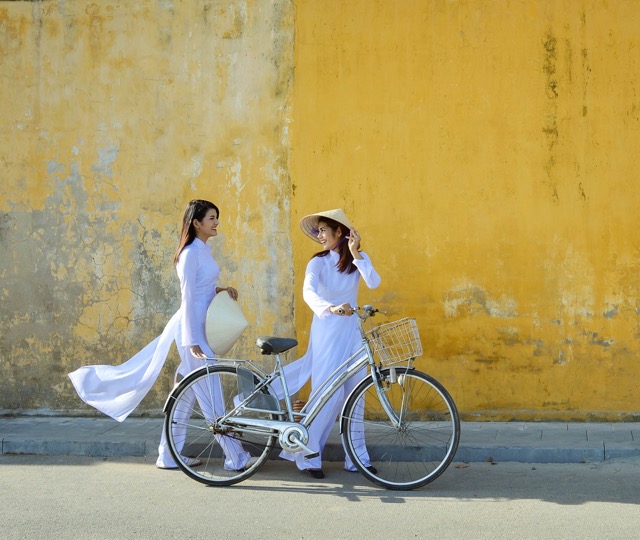
On the international stage, the Ao Dai becomes a cultural ambassador, representing Vietnam at global forums and events. Its solemnity and elegance showcase the grace of Vietnamese women to the world, reinforcing the country’s cultural lifestyle and spirit of solidarity.
The Ao Dai is not merely a piece of clothing; it is a symbol of familial bonds and festive celebrations. During Tet (Lunar New Year) and other special occasions, families across Vietnam don the Ao Dai, creating a shared sense of joy and unity. Its significance extends beyond the individual family to encompass the broader Vietnamese community, fostering a sense of collective identity and shared values.
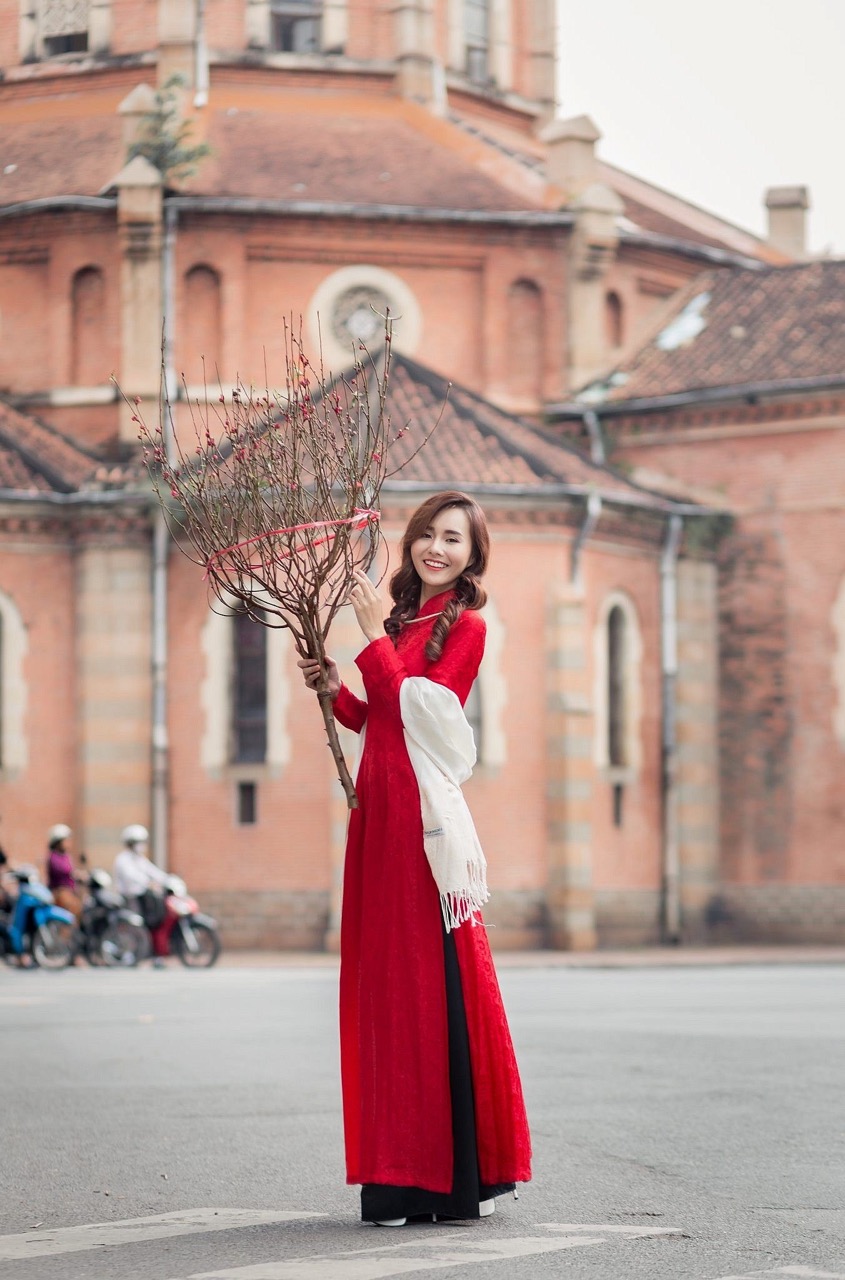
The Ao Dai proudly represents Vietnamese culture and its people. Its aesthetic value goes beyond fashion, serving as a conduit to disseminate Vietnamese cultural traditions globally. Tourists visiting Vietnam witness the Ao Dai’s beauty, and even in distant Western countries, this traditional attire finds a place, spreading the essence of Vietnamese culture to friends around the world.
Conical Hats
Hats, whether crafted from straw or leaves, hold a dual purpose in Vietnam, shielding against the sun and rain while embodying the essence of Vietnamese culture. The revered Non La, or conical hat, made its debut in the 13th century during the Tran Dynasty. Influenced by Vietnam’s hot, humid, and rainy tropical monsoon climate, this ingenious invention became a staple in daily life.
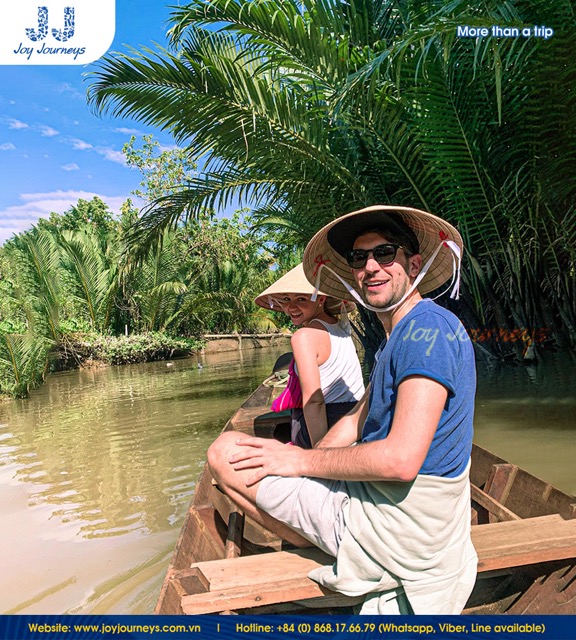
In rural settings, Quai Thao hats are integral to women’s attire during festivals or temple occasions, historically classified based on the owner’s social status. Regional distinctions in conical hat styles are notable, from the red-threaded Westerners’ hats to the thinner and more elegant Hue hats compared to those in Binh Dinh.
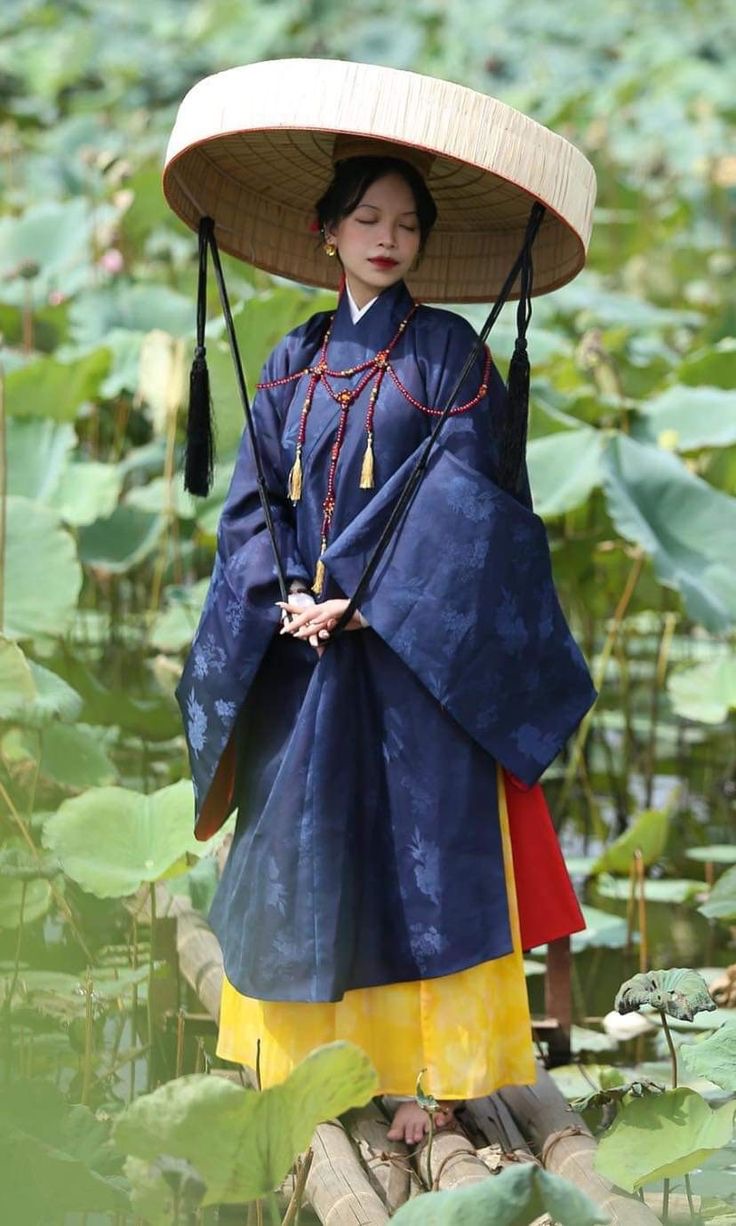
Conical hats serve diverse purposes, adorning heads in markets, shielding farmers in fields, and embodying the gentle spirit of the Vietnamese people. Despite evolving fashion trends in urban areas, the conical hat remains a beloved symbol in Vietnamese villages. Tourists, captivated by its charm, often take home this distinctive headwear as a cherished souvenir.
Though less common in big cities, the conical hat persists in the imagery of Vietnamese girls. Woven from various leaves such as palm, straw, bamboo, and more, the hats exhibit vibrant colors and may feature soft fabric straps. The conical shape, characteristic of most hats, is complemented by variations with wide, flat tops. The intricate craftsmanship involves arranging cone spokes on a frame made of small, flexible bamboo sticks, forming the distinct pyramid shape.
Preserving Tradition in Changing Times
The conical hat, once a practical necessity, has seamlessly transitioned into a cultural emblem. While its purpose endures, the hat’s symbolic resonance has transcended time, making it not just an accessory but a cherished representation of Vietnam’s rich cultural heritage. Whether shielding against raindrops or adorning the heads of farmers and festival-goers, the conical hat remains an enduring symbol, weaving tradition into the vibrant tapestry of Vietnamese life.
Navigating Cultural Norms
Decoding Dress Codes for Different Occasions
In the vibrant tapestry of Vietnamese culture, dressing appropriately is more than a matter of personal style; it reflects respect for traditions and societal norms. Understanding the nuances of dress codes for various occasions is crucial for visitors to seamlessly integrate into Vietnamese society.
Formal events and religious ceremonies often require conservative attire. For men, this means long pants and a collared shirt, while women should opt for modest dresses or pants paired with a non-revealing blouse. Temples and pagodas, significant cultural and religious sites, demand respectful attire – covered shoulders and knees. Removing shoes before entering someone’s home or religious spaces is a customary sign of politeness.
In more casual settings, such as markets or outdoor excursions, lightweight and modest clothing is suitable, given Vietnam’s tropical climate. However, overly revealing outfits may attract unwanted attention and can be considered disrespectful.
Tips on Adorning Traditional Vietnamese Clothing with Respect
Exploring Vietnam’s rich cultural heritage may involve donning traditional clothing, like the iconic “Ao Dai.” When embracing this elegant attire, certain considerations ensure cultural sensitivity. For women, the Ao Dai, a long tunic over pants, should be worn with modesty – avoiding excessively tight or revealing designs.
For both genders, the conical hat, known as “Non La,” adds a touch of cultural authenticity. While it’s a popular souvenir, wearing it with awareness of its cultural significance demonstrates respect. When participating in cultural festivals or events, understanding the specific dress requirements and adhering to them showcases a genuine interest in and appreciation for Vietnamese traditions.
Exploring the Essence: Ao Dai Festival Unveiled
Honoring Tradition through Cultural Extravaganza
The Ao Dai Festival, an annual cultural-tourism extravaganza, unfolds as a vibrant celebration, paying homage to the timeless elegance of the traditional Vietnamese ao dai. This cherished event, held annually in Ho Chi Minh City, marks the initiation of a series of activities dedicated to preserving the rich cultural legacy encapsulated in the ao dai—a symbol of national identity.
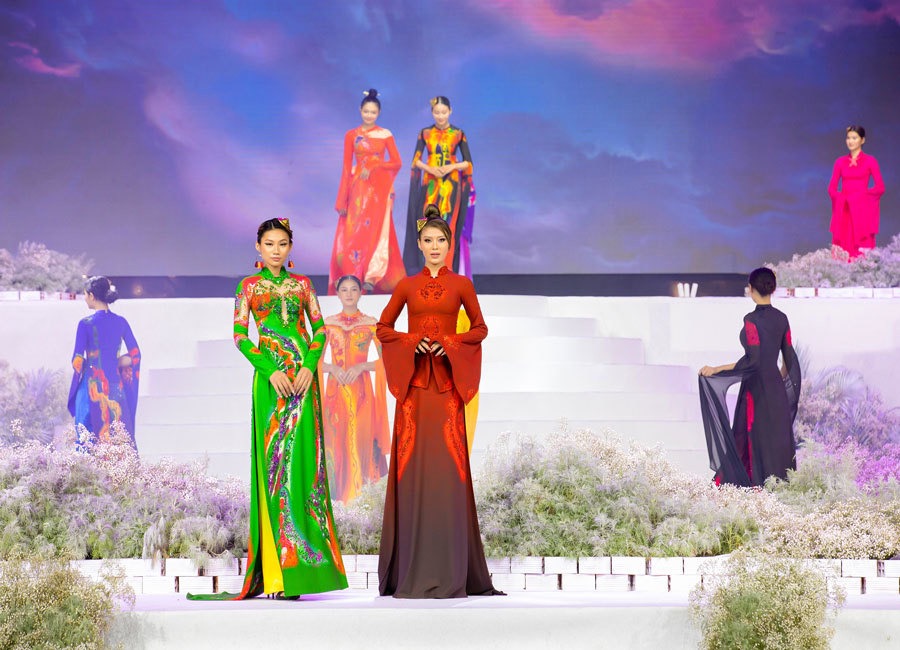
Preserving Intangible Heritage
More than a mere fashion show, the Ao Dai Festival serves as a testament to the collective efforts in safeguarding intangible cultural heritage. The ao dai, with its graceful silhouette and intricate designs, embodies the essence of Vietnamese identity. This festival becomes a focal point for individuals passionate about preserving and promoting the nation’s unique cultural values.
Unique Cultural Tourism Experience
Transforming into one of the country’s distinctive cultural tourism products, the Ao Dai Festival attracts enthusiasts from across the globe. Beyond being a visual spectacle, the festival weaves together various activities that immerse participants in the love and appreciation for the ao dai. Through diverse programs and contests, it captures the hearts of both domestic and international tourists, fostering a deeper connection with Vietnamese traditions.
Marching to Cultural Beats
Held annually in March, the festival graces historical and cultural landmarks, transforming the city into a vibrant tapestry of ao dai appreciation. The event unfolds with a myriad of captivating activities, including the grand Ao Dai parade, art programs showcasing the cultural significance of ao dai, graceful contests, and even drawing competitions celebrating the artistic essence of this traditional attire.
Inspiring Generations
The Ao Dai Festival serves as a platform for inspiration, instilling a renewed love for the ao dai among both locals and tourists. It goes beyond being a static display of cultural heritage; it encourages active participation through contests, fostering a dynamic engagement with the nation’s sartorial legacy.
Conclusion
In concluding our exploration, Vietnamese traditional clothing stands as a vibrant testament to the nation’s rich cultural tapestry. From the allure of Ao Ba Ba to the grace of Ao Dai, each garment encapsulates the essence of Vietnamese identity. Embracing this timeless elegance is not merely donning attire; it’s a celebration of heritage, an immersion into the artistry that defines Vietnam’s sartorial legacy.
Frequently Asked Questions
What is Vietnam traditional clothing?
Vietnam traditional clothing encompasses a range of garments reflecting the country’s diverse culture. Notable examples include the Ao Dai for both men and women, Ao Ba Ba, and the iconic conical hat, Non La. These garments hold cultural significance, often worn during special occasions, festivals, and as daily attire.
Is it OK to wear ao dai?
Absolutely! Wearing the Ao Dai is not only acceptable but encouraged, especially during cultural events, celebrations, and festivals. It symbolizes respect for Vietnamese traditions and is a wonderful way to immerse oneself in the local culture.
What is the difference between ao dai and Ao gam?
Ao Dai is the traditional Vietnamese attire, a long tunic worn over pants. Conversely, Ao Gam refers to garments crafted specifically from Gam, a distinctive fabric commonly used in creating Ao Dai. The difference lies in their scope: Ao Dai represents the complete traditional outfit, while Ao Gam narrows down to clothing fashioned from the unique Gam fabric, celebrated for its intricate patterns and texture.
What do people dress like in Vietnam?
People in Vietnam dress in a diverse array of clothing, ranging from modern, Western-influenced attire in urban areas to traditional garments like the Ao Dai and Ao Ba Ba. The choice of clothing depends on the occasion, with more formal events requiring traditional wear, and casual or daily activities allowing for a mix of traditional and contemporary styles.


Related Posts
Vietnam Motorbike Adventures: The Ultimate Guide
With its breathtaking landscapes, rich cultural heritage, and vibrant local experiences, Vietnam offers an unforgettable adventure for motorbike enthusiasts. Discover hidden gems, meet friendly locals, and create lasting memories as you explore diverse terrains and immerse yourself in the heart of Vietnam. Why Choose a Motorbike Adventure in Vietnam? Freedom and Flexibility If you love […]
Experience the Living Conditions in Cu Chi Tunnels: Unbelievable!
Cu Chi Tunnels served as the living quarters for soldiers and civilians during Vietnam’s resistance against France and America. Today, this remarkable site stands as a symbol of perseverance, determination, and resilience during one of the most challenging periods in Vietnamese history. Discover the living conditions in Cu Chi Tunnels with Joy Journeys in the […]
Vietnam Fish Cake: A Culinary Delight
Vietnam fish cake, known for its delicious and diverse flavors, is a favorite among tourists looking to explore authentic Vietnamese cuisine. From the crispy, golden-brown texture of fried fish cakes to the fragrant, herb-infused variations found in regional specialties, these savory delights offer a true taste of Vietnam. In this article, we will take you […]